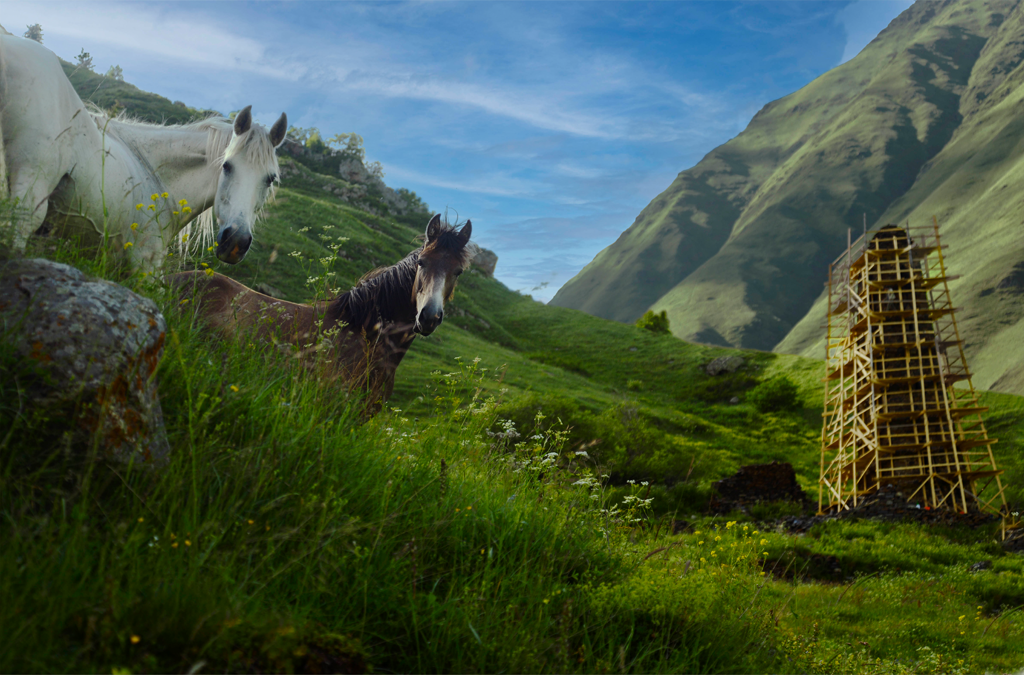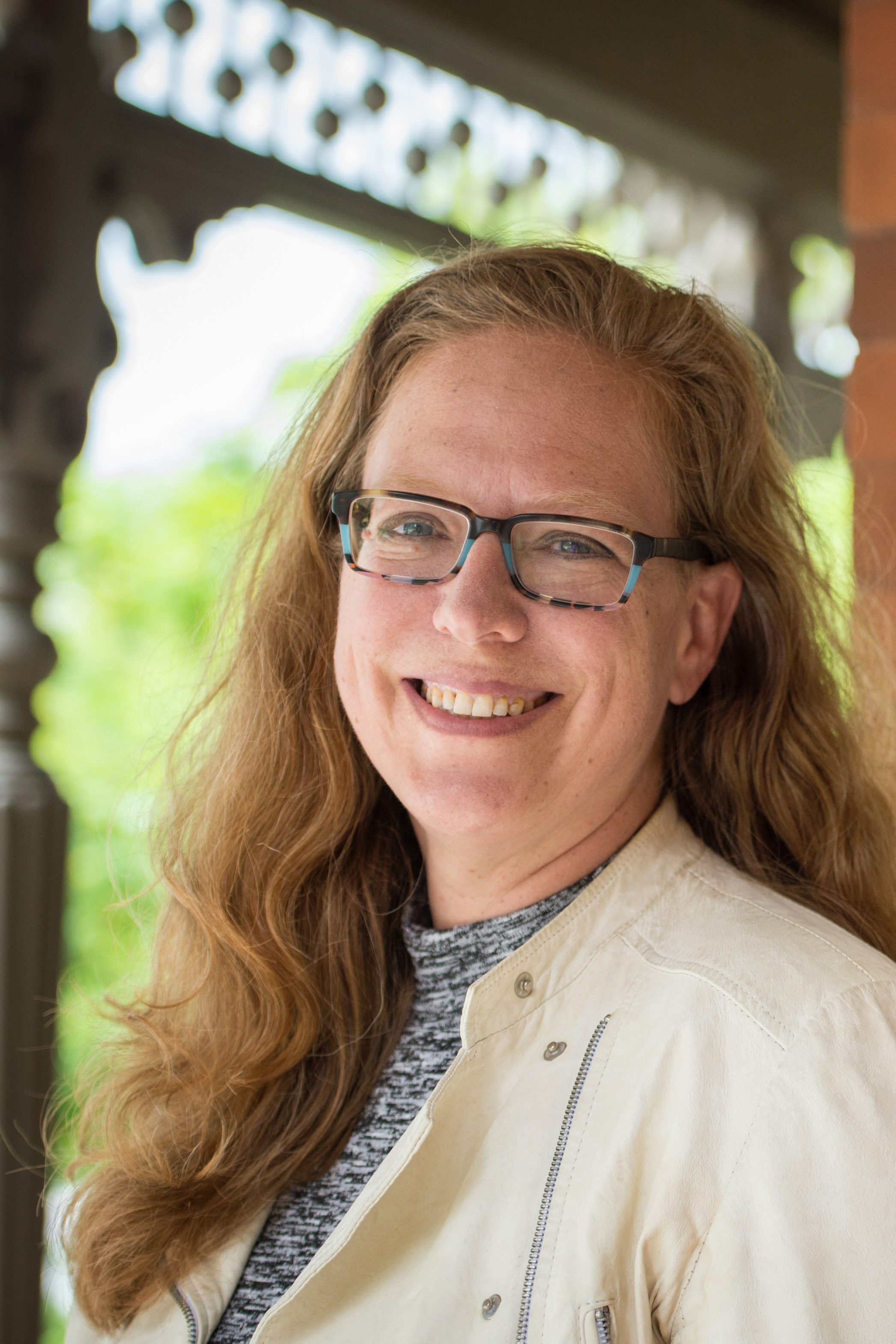A Spotlight on the International National Trust Organization
World Heritage Day 2022 saw the public launch of the INTO Places program, linking National Trusts around the world into a network of more than 1000 historic sites that National Trust for Canada’s members can visit for free. With over 70 national and territorial organizations in the membership, the International National Trust Organization (INTO) is an international voice for heritage. Founded to promote best conservation practices, the sharing of resources, and to provide a forum for the conservation of global heritage, INTO features sites in countries from around the globe: from Australia to Malta, and Canada to Zimbabwe.
As a member of INTO, the National Trust for Canada contributes to the global heritage conversation by participating at INTO’s biennial conference, joining in their grant program and speaking up in their knowledge-sharing programs such as climate and nature. In fact, the National Trust for Canada was a founding partner in exploring reciprocal visitation between member organizations, that is now the INTO Places program.
With so many sites to choose from around the world, it’s difficult to know which INTO places to feature for this article. Fortunately, their website links to a treasure trove of cultural discoveries and it is easy to explore.
Here are a few adapted excerpts from this resource. We hope you are inspired to plan your next heritage trip.
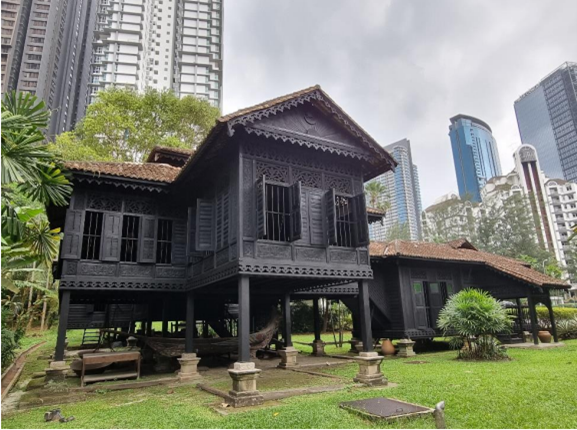
Photo by: Badan Warisan Malaysia
Rumah Penghulu Abu Seman, Kuala Lumpur, Malaysia – Badan Warisan Malaysia – Heritage of Malaysia Trust
The Rumah Penghulu Abu Seman is one of the oldest surviving traditional Malay houses in Kuala Lumpur. Once owned by a Penghulu, the local chief of a small village in the northern part of the Malaysian peninsula, the building was completely dismantled and relocated in 1996 to Badan Warisan Malaysia’s headquarters in Kuala Lumpur. The relocation and restoration of the building was undertaken to preserve this significant historic structure that illustrates the beauty of Malay vernacular architecture. Detailed carvings reflect the skill of Malay craftsmen and the status accorded to the position of a Penghulu. Scenes and settings that depict the daily lifestyle and important rites of passage in the Malay culture have been recreated inside, reflecting the style of the 1950s and 1960s. Located in the heart of Kuala Lumpur among its many imposing high-rise buildings, the Rumah Penghulu is surrounded by a traditional herb and heritage garden and is an urban oasis.
One unique feature of the house is its attached Balai, or verandah. A typical Malay house does not have a Balai but this addition was built by the government as an office. The covered verandah includes a pejabat (office) and the bilik Penghulu (Penghulu’s room). Community and other administrative matters were resolved at the Balai. The Penghulu’s room was sometimes used as a temporary ‘lock-up space’ for offenders when the Penghulu so decreed.
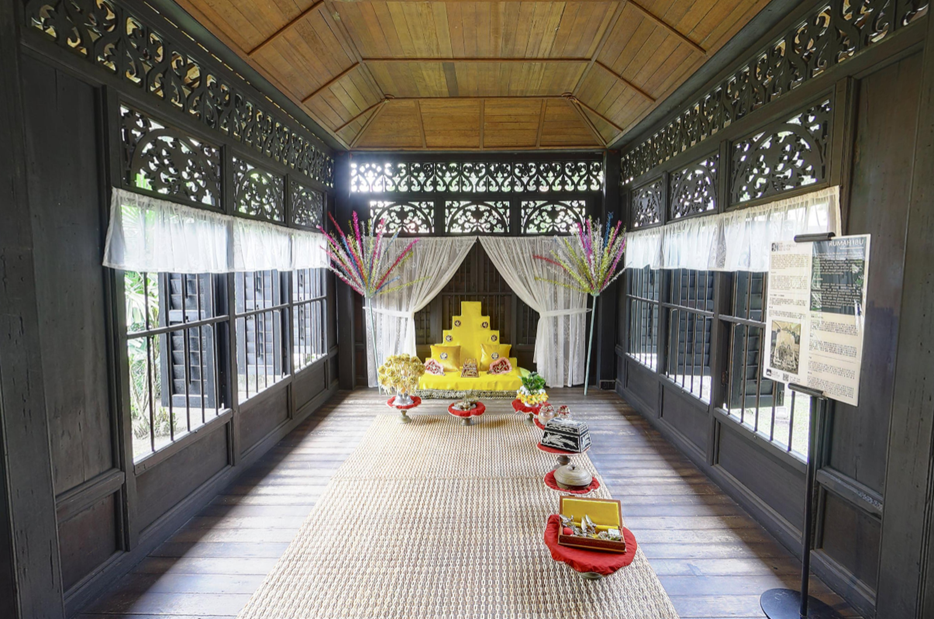
Rumah Ibu – Main House – Setup for a traditional Malay wedding ceremony. Photo by: Badan Warisan Malaysia
Experience the 360° virtual tour of the Rumah Penghulu Abu Seman. Insider tip: Select ‘Aerial View’ to see incredible views of the surrounding area and some of Kuala Lumpur’s tallest buildings.
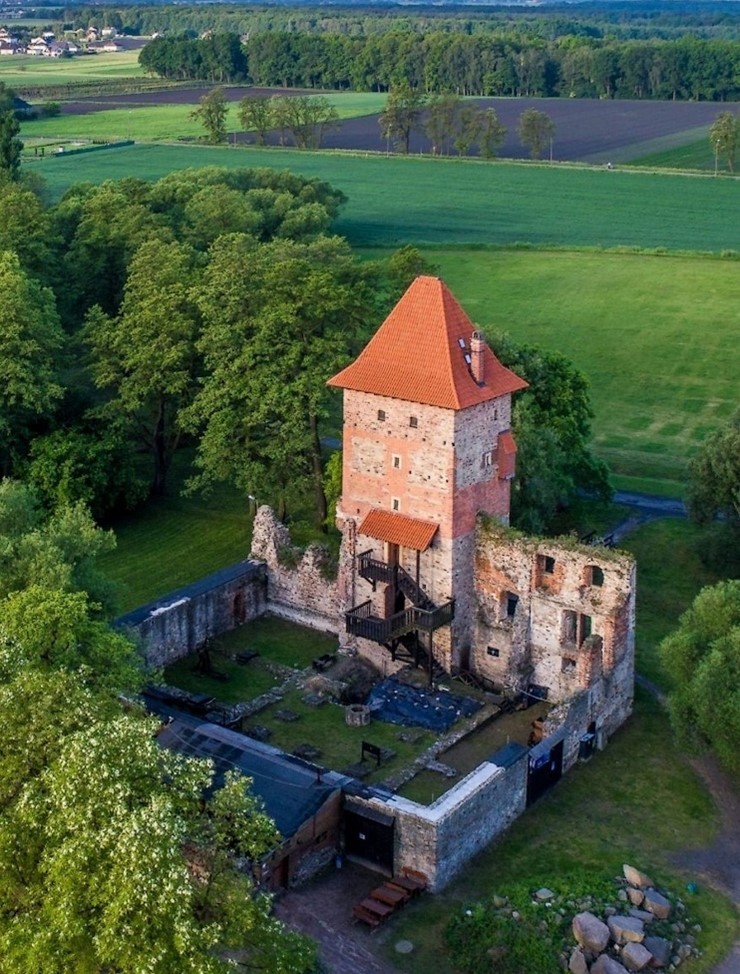
Photo by: Sokole Oko Drona
Chudów Castle, Chudów, Poland – Chudów Castle Foundation
This Renaissance castle, 100 km west of Kraków in Poland is part of a complex that consists of a 16th-century castle, an 18th-century granary, and 7 hectares of parkland. They make up the remains of the former knight estates of Chudów-Paniówka. The castle is an example of a 16th-century noble residence with defensive systems typical of this type of building – massive walls, a location in a naturally defensive area, the Chudów wetlands, and a moat.
From its beginnings in the 15th century as a wooden post-frame building, the building has changed many hands and expanded considerably until it burned down in 1875. At that point the owner secured the roof of the tower, but had the walls demolished, creating a picturesque ruin which was fashionable at the time. Soon after, an open building for outdoor concerts was built in the courtyard.
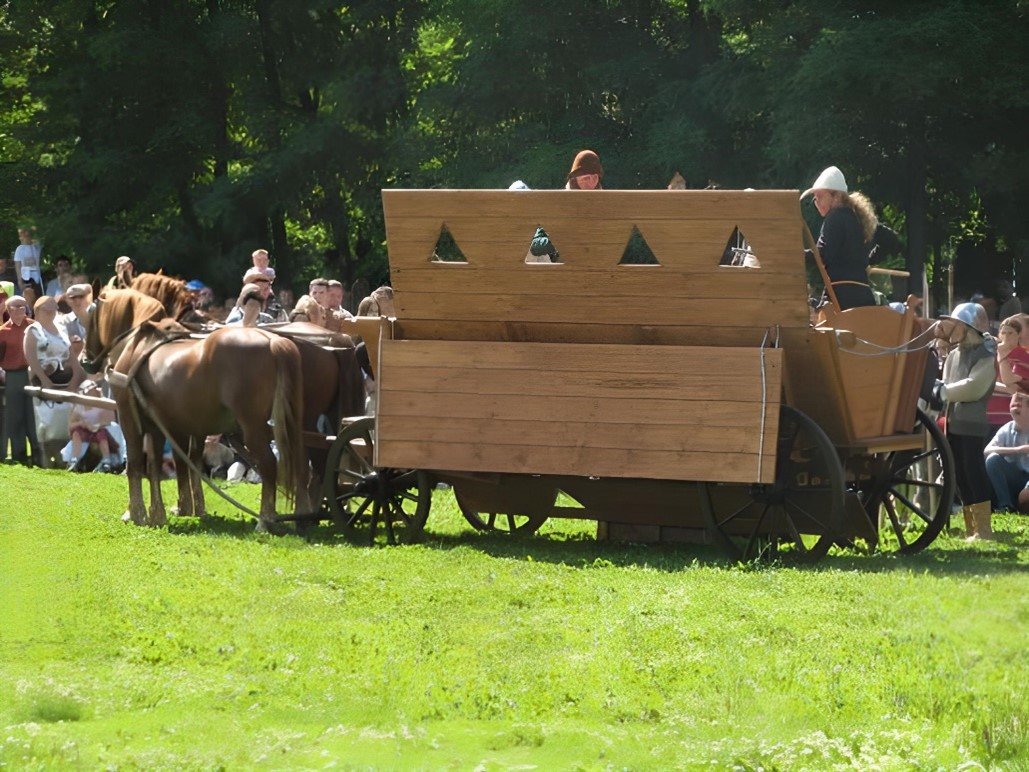
Hussite war wagon. Photo by: Chudów Castle Foundation
Since the end of the 20th century, the Chudów Castle Foundation has owned the castle, and has conducted archaeological research and partially reconstructed the tower, in which a museum is now located. The museum features archaeological finds from the property such as the stove tiles, a gate locking system, parts of the medieval well as well as a reconstructed Hussite war wagon.

Medieval Fair at Chudów Castle. Photo by: Chudów Castle Foundation
Since 2000, the Chudów Castle Foundation organizes an annual medieval fair along with historical reenactments of medieval tournaments and warfare on Chudów castle grounds.
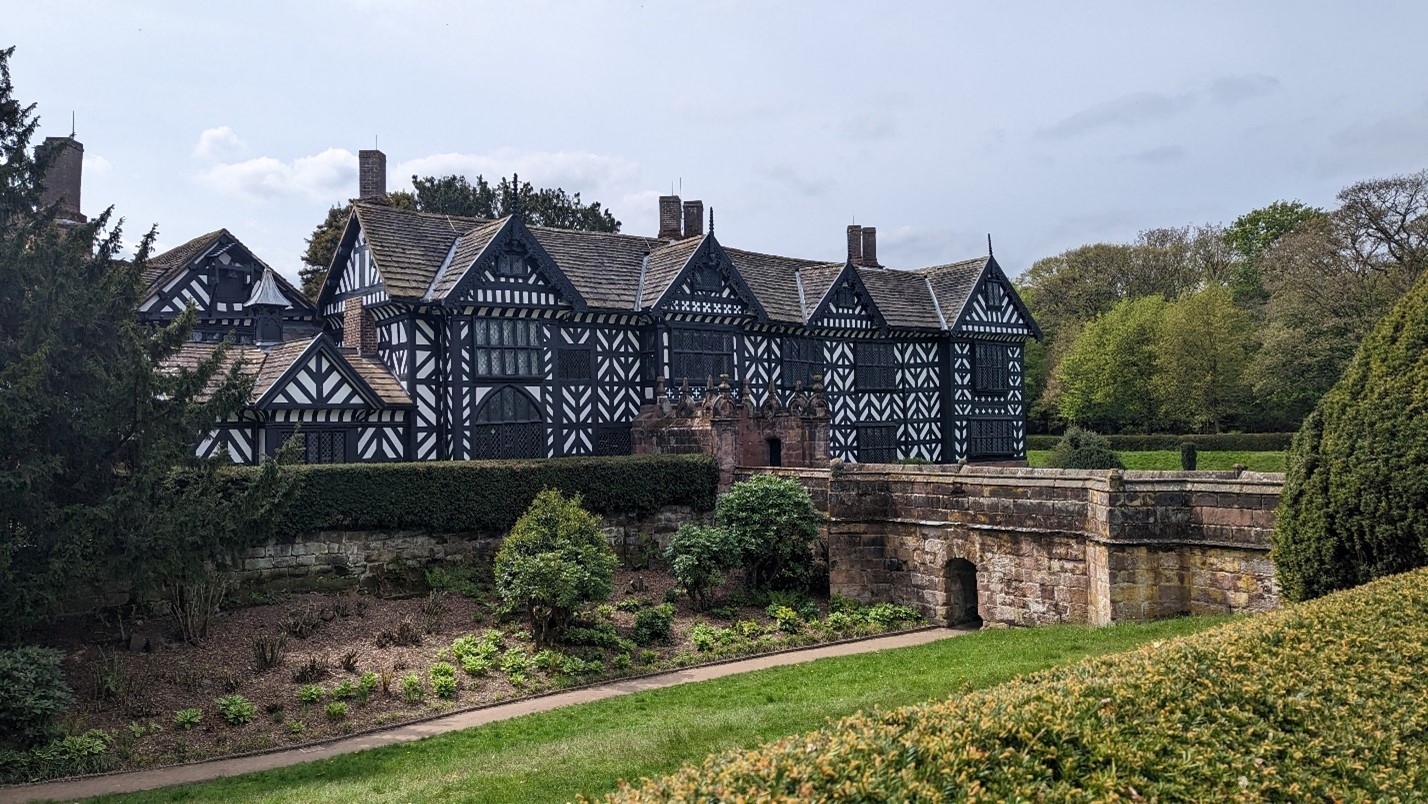
Photo by: Michael Seaman
Speke Hall, Garden and Estate, Liverpool, United Kingdom – National Trust
Speke Hall is a rare Tudor timber-framed manor house in Speke, Liverpool, England. Restored in the 19th century, it is a unique mixture of Tudor simplicity and Victorian Arts and Crafts’ aesthetics.
Built in 1530 by the devout Catholic Norris family, eager to impress visitors with the grandeur of their home, Speke Hall embodies more than 400 years of turbulent history. Its secret priest hole reflects Catholic persecution in the Tudor period, whilst much of the Hall’s upkeep was financed by the owners’ involvement in transatlantic slavery. A Liverpool merchant, Richard Watt, bought Speke Hall in 1795 out of the profits he’d made as a slave trader and plantation owner in Jamaica. The Watt’s continued to own the home till the ownership was passed to the National Trust in 1943.
During the 18th and 19th centuries, Speke Hall experienced years of neglect and decay, including being used as a cow shed. Finally pulled into the Victorian era of improvement and technology, the Hall was resuscitated with a Gothic revival style.
The Speke Hall and its surrounding estate now provide a place to reflect on past and present, and how this heritage remains relevant today. The Hall is surrounded by restored gardens and protected by a collar of woodland.
INTO and the National Trust of Georgia
Beyond reciprocal visiting, INTO has been engaged in supporting heritage initiatives across the globe, through a variety of programs and resources including educational workshops and partnership projects. One such project was the restoration of the Tsiskarauli Ancestral Tower, of Akheli Georgia, a collaborative effort organized between the National Trust of Georgia (NTG), INTO, and REMPART and supported by the ALIPH foundation.

Tskiskarauli Tower, Akheili, under repair. Photo: National Trust of Georgia
Akheili is a remote village situated within Khevsureti, a region of the Georgian Caucasus renowned for breathtaking mountainous, landscapes and an abundance of medieval stone fortresses and towers. The Tsiskarauli Tower is one of such structures: a late medieval stone watchtower, standing at 22 metres high.
“This tower is a source of pride and a historical monument for these villages…preserving cultural heritage is vital here,” said Marine Mizandari, Project Director of the Tower’s Restoration and co-chair of the National Trust of Georgia.
As many have pointed out, this tower has witnessed centuries of conflict, not limited to its medieval origins, but as recently as 2001 when a Russian Missile struck the tower, in the midst of the second Russian-Chechen War. At risk of collapse for over a decade, in 2020 the NTG launched a three-year community project to stabilize and restore the structure.
The project was completed with support from the International Alliance for the Protection of Heritage in Conflict Areas (ALIPH), and through partnerships with INTO and REMPART: a French-based organization providing international volunteer work and training programs for heritage restoration efforts. On the ground, the project team consisted of local experts, including conservation experts and traditional craftspeople, supported by an international group of volunteers.

According to INTO, the project involved “Intricately recovering doorways and windows, re-structuring the roof and interior floors, delicately filling cracks and holes under guidance of conservation experts and traditional craftspeople.”
The tower’s restoration was completed in the summer of 2023, and was celebrated with a series of newly established hiking trails for tourists to visit Akheili and see the restored tower in person.
While the restoration of the Tsiskarauli Tower is an undoubted success story for the cultural heritage of Akheili, the NTG continues to fight an uphill battle to save built heritage across the country.
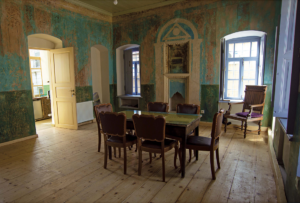
NTG headquarters in Tbilisi, Georgia. The building is from the 18th-19th century and restored between 2018-2022. Photo: National Trust of Georgia
“Today the nation’s historic architecture is being squeezed like never before as the pressures to develop the economy and modernize grow. Currently the future is presented as glass and steel construction. Historic renovation all too often means demolition instead of the slower, more culturally sensitive process of restitution.” writes cofounder of NTG, Peter Nasmyth.
Looking forward, The National Trust of Georgia is calling for a conference on “What is Modern?” drawing attention to the rapidly disappearing built heritage of the Georgian capital, Tbilisi. As Nasmyth writes, “Tbilisi has to be one of the best venues to ask this – as its face transforms more rapidly than most other capital cities, and its historical zones are swallowed up with such unusual, and many say, alarming speed.”[i]
Readers interested in learning more about the initiatives of the National Trust of Georgia, as well as the many programs and resources offered through INTO are encouraged to check out the links below.
https://www.into.org/
http://www.nationaltrustofgeorgia.org.ge/
https://indigo.com.ge/en/articles/what-is-happening-to-tbilisi

Explore 1000+ National Trust properties around the globe by showing your National Trust for Canada member card and receive *free or discounted entry at sites operated by partner organizations. The International National Trusts Organization’s INTO Places program features special places from England to Zimbabwe. From castles and inns, to ranches and landscapes, these are places you won’t want to miss. Visit INTO.org/Places to discover all the participating countries. Become a member today!
[i] This quote is featured in the Indigo article “What is Happening to Tbilisi,” published August 23, 2023. https://indigo.com.ge/en/articles/what-is-happening-to-tbilisi

